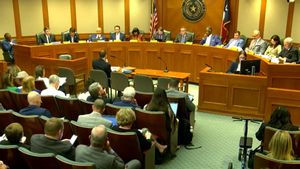Engineers working on the HS2 project have recently commenced assembling the Turweston green bridge, located at the fringes of Buckinghamshire and Northamptonshire, marking a significant milestone for this high-speed rail initiative. This impressive structure, spanning 5,940 square meters near Brackley, is specially constructed to carry both a rural lane and footpath, facilitating safe passage across the new railway for small animals, insects, and birds. With the pressing issue of wildlife corridors becoming increasingly prominent due to urban and infrastructural expansion, this project embodies commitment to both connectivity and ecological conservation.
The Turweston bridge is strategically positioned to address one of the longest and deepest cuttings on the HS2 line, which will run for 1.5 miles between the Westbury and Turweston viaducts. This approach not only mitigates noise pollution but also minimizes disruption for local residents. Wildlife corridors are integral to maintaining biodiversity, and this green bridge aims to blend seamlessly with the surrounding environment, promoting safe passage for various species.
The construction process showcases ingenious engineering techniques. A 600-ton crawler crane has been pivotal, lifting 36 massive steel beams—each weighing up to 105 tonnes—into place. These beams will support the structure's concrete deck, which will eventually bear 2,700 cubic meters of earth, enhancing the landscaped area surrounding the bridge. Notably, these beams were fabricated offsite and then assembled at the construction site, enabling efficient resource management.
Cameron Thompson, HS2 Ltd's Head of Delivery, expressed enthusiasm about the project, stating, “It’s great to see the first beams lifted at Turweston and I’d like to thank everyone involved. Once complete, this impressive structure will help keep communities connected, all the whilst protecting wildlife and biodiversity on either side of the railway.” With infrastructure developments like the Turweston bridge, HS2 aims to strike a balance between modern transport solutions and environmental sustainability.
Complementing this undertaking, five extensive green tunnels are being constructed along the HS2 route between London and Birmingham. These tunnels, some stretching up to 1.5 miles long, also play a pivotal role in creating wildlife habitats. Together, the tunnels and green bridge will support efforts to establish 33 square kilometres of new wildlife environments, including the planting of seven million new trees and shrubs, significantly contributing to the overarching goal of promoting biodiversity.
While construction projects often come under scrutiny for the financial burdens they create, the Turweston bridge has demonstrated potential cost-saving efficiencies. Favorable ground conditions allowed the design team to replace 102 deep piles with shallow foundations, optimizing construction costs without compromising structural integrity. Luis Prieto, the structures project manager for EKFB, emphasized the successful mitigation of economic concerns through innovative design revisions, stating, “The design optimisations have enabled us to make significant progress on such a large structure.”
Despite the focus on fiscal efficiency, the construction of green bridges at HS2, including Turweston, reflects the broader commitment to environmental stewardship. These structures, albeit not structurally necessary for the railway's operations, highlight the importance of maintaining wildlife connectivity alongside infrastructure development. The consideration of such factors appears increasingly significant, especially as more consciousness surrounding the impact of construction on local ecosystems takes center stage.
Overall, the Turweston green bridge at HS2 is not merely about paving the way for new transport arteries; it embodies the integrating principles of wildlife protection and community connectivity. This project stands as one of 16 similar initiatives along the route, all of which aspire to facilitate ecological functionality within the frameworks of modern transport planning. Commentary from project leaders continuously highlights the dual role such infrastructure plays: connecting communities and nurturing biodiversity.



